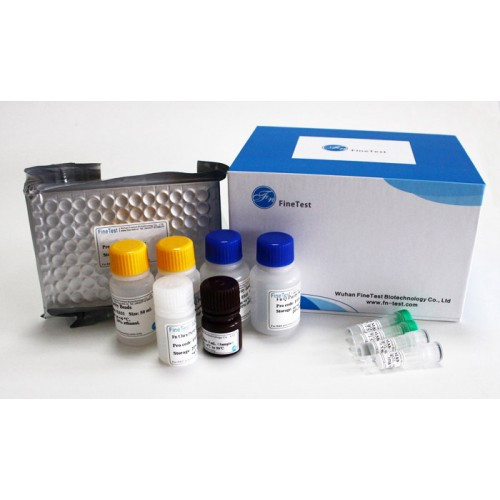Product Description
Recombinant Human Interferon-induced helicase C domain-containing protein 1 (IFIH1), partial is available at Gentaur for Next week Delivery.
Gene Name: IFIH1
Alternative Names : Clinically amyopathic dermatomyositis autoantigen 140KDA Short name: CADM-140 autoantigen Helicase with 2 CARD domains Short name: Helicard Interferon-induced with helicase C domain protein 1 Melanoma differentiation-associated protein 5 Short name: MDA-5 Murabutide down-regulated protein RIG-I-like receptor 2 Short name: RLR-2 RNA helicase-DEAD box protein 116
Expression Region : 700-1025aa
AA Sequence : KLTKLRNTIMEQYTRTEESARGIIFTKTRQSAYALSQWITENEKFAEVGVKAHHLIGAGHSSEFKPMTQNEQKEVISKFRTGKINLLIATTVAEEGLDIKECNIVIRYGLVTNEIAMVQARGRARADESTYVLVAHSGSGVIEHETVNDFREKMMYKAIHCVQNMKPEEYAHKILELQMQSIMEKKMKTKRNIAKHYKNNPSLITFLCKNCSVLACSGEDIHVIEKMHHVNMTPEFKELYIVRENKALQKKCADYQINGEIICKCGQAWGTMMVHKGLDLPCLKIRNFVVVFKNNSTKKQYKKWVELPITFPNLDYSECCLFSDED
Sequence Info : Partial
Tag Info : N-terminal 6xHis-SUMO-tagged
Theoretical MW : 53.5 kDa
Storage Buffer : Tris/PBS-based buffer, 5%-50% glycerol. If the delivery form is lyophilized powder, the buffer before lyophilization is Tris/PBS-based buffer, 6% Trehalose, pH 8.0.
Endotoxin Level : Not tested-
Biological Activity : Not tested
Storage : Short term: -20°C; Long term: -80°C. Minimize freeze and thaw cycles.
Research Area : Epigenetics and Nuclear Signaling
Restriction : For Research Use Only. Not for use in diagnostic procedures, drug use, or for administration to humans or animals.
Relevance : Innate immune receptor which acts as a Cytoplasmic domain sensor of viral nucleic acids and plays a major role in sensing viral infection and in the activation of a cascade of antiviral responses including the induction of type I interferons and proinflammatory cytokines. Its ligands include mRNA lacking 2'-O-methylation at their 5' cap and long-dsRNA (>1 kb in length). Upon ligand binding it associates with mitochondria antiviral signaling protein (MAVS/IPS1) which activates the IKK-related kinases: TBK1 and IKBKE which phosphorylate interferon regulatory factors: IRF3 and IRF7 which in turn activate transcription of antiviral immunological genes, including interferons (IFNs); IFN-alpha and IFN-beta. Responsible for detecting the Picornaviridae family members such as encephalomyocarditis virus (EMCV) and mengo encephalomyocarditis virus (ENMG). Can also detect other viruses such as dengue virus (DENV), west Nile virus (WNV), and reovirus. Also involved in antiviral signaling in response to viruses containing a dsDNA genome, such as vaccinia virus. Plays an important role in amplifying innate immune signaling through recognition of RNA metabolites that are produced during virus infection by ribonuclease L (RNase L). May play an important role in enhancing natural killer cell function and may be involved in growth inhibition and apoptosis in several tumor cell lines.
Function : Innate immune receptor which acts as a cytoplasmic sensor of viral nucleic acids and plays a major role in sensing viral infection and in the activation of a cascade of antiviral responses including the induction of type I interferons and proinflammatory cytokines. Its ligands include mRNA lacking 2'-O-methylation at their 5' cap and long-dsRNA (>1 kb in length). Upon ligand binding it associates with mitochondria antiviral signaling protein (MAVS/IPS1) which activates the IKK-related kinases
Involvement in disease : Diabetes mellitus, insulin-dependent, 19 (IDDM19); Aicardi-Goutieres syndrome 7 (AGS7); Singleton-Merten syndrome 1 (SGMRT1)
Subcellular location : Cytoplasm, Nucleus
Protein Families : Helicase family, RLR subfamily
Tissue Specificity : Widely expressed, at a low level. Expression is detected at slightly highest levels in placenta, pancreas and spleen and at barely levels in detectable brain, testis and lung.
Paythway :
Uniprot ID : Q9BYX4
 Euro
Euro
 British Pound
British Pound
 US Dollar
US Dollar








